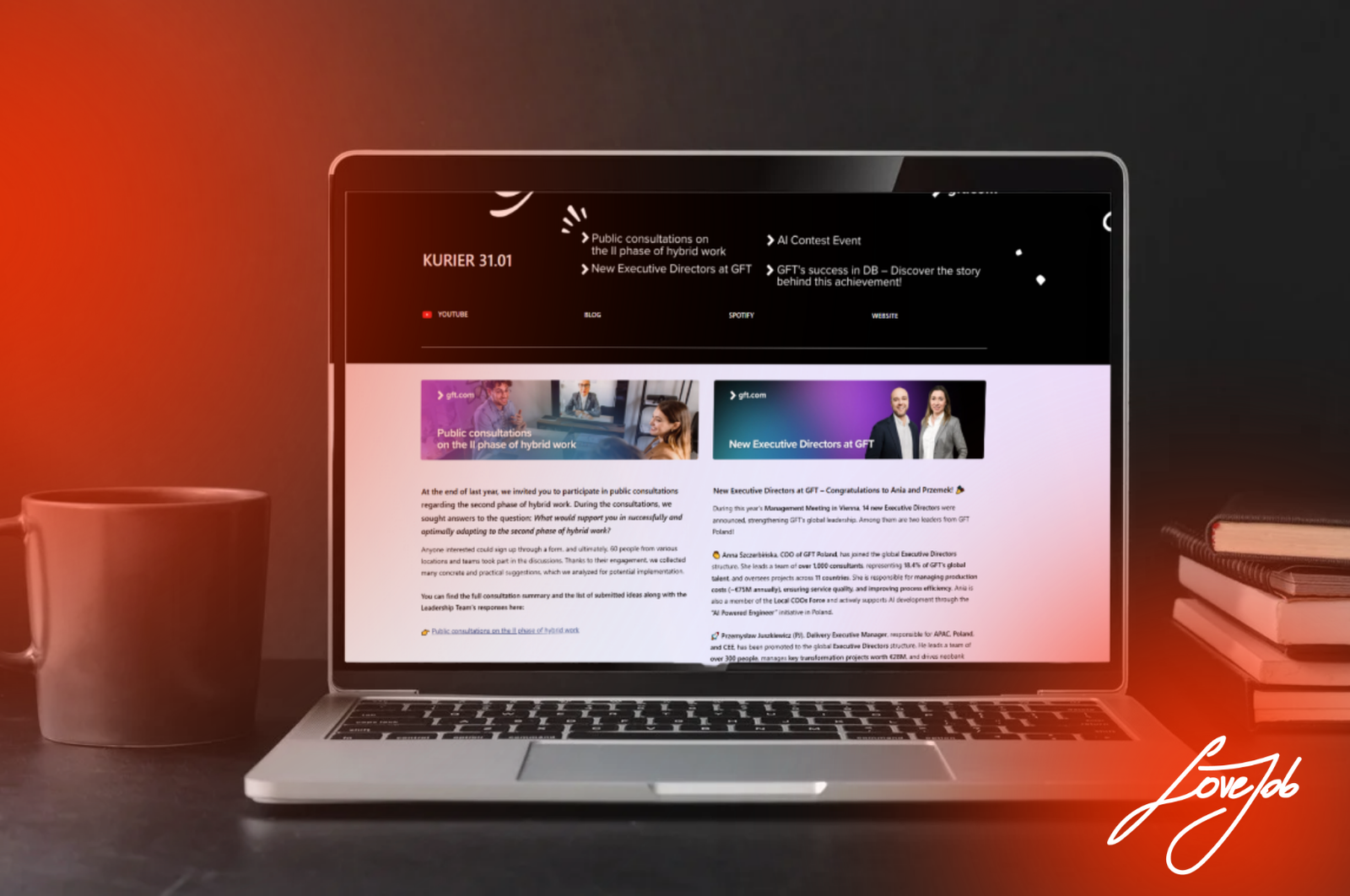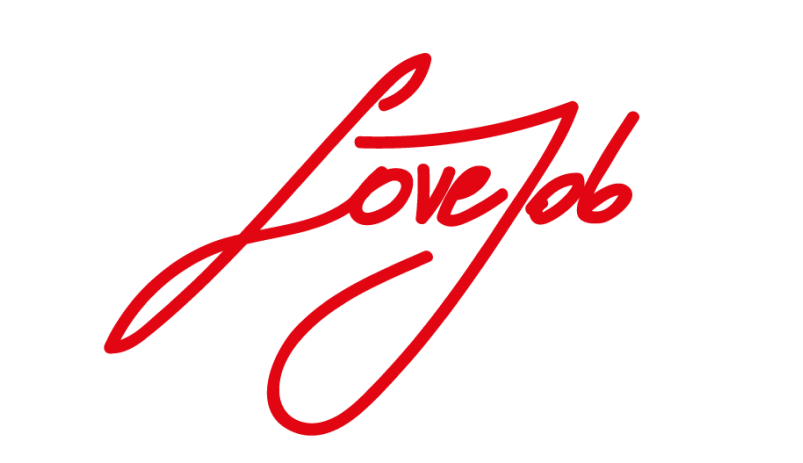SharePoint Intranet as the foundation of communication

What is SharePoint Intranet?
It provides:
- Efficient document management and quick access to key resources.
- Automation of communication and processes (e.g., leave requests, onboarding).
- Announcement updates and support for training and events.
- Intuitive navigation and content personalization.
- Full integration with Microsoft 365 and other tools.
How to effectively implement a SharePoint Intranet?
1. Define the goals and content
The first step in creating an intranet is planning its content. Consider what information and resources should be easily accessible to truly improve daily team workflows. Analyze which documents and tools employees use most often and what processes can be automated.
A SharePoint Intranet supports communication in an organization when its functionality is closely aligned with business objectives. Define them by answering the following:
- Should the intranet serve as a central information hub?
- What communication processes should it improve?
- Who will be using it, and what are their needs?
2. Choose the right type of site
An intranet can be designed as:
- An official information center – for publishing announcements, news, and key organizational updates.
- A collaboration space – enabling knowledge exchange and improving teamwork.
- An HR portal – providing access to company policies, documents, and tools supporting HR processes.
- A platform supporting organizational culture – a place for promoting internal initiatives and employee integration.
If the SharePoint Intranet is meant to function as an open information space managed by the communication department or other teams, a Communication Site is the best choice. This dedicated SharePoint site type allows for efficient content management, such as announcements, documents, and corporate events.
3. Design the structure to meet users’ needs
A well-structured intranet makes it easy for users to navigate. Consider implementing the following:
- A content hierarchy aligned with company needs – categorized into sections like News, Documents, Projects, HR.
- Intuitive navigation – logically structured menus enabling quick access to frequently used resources.
- Content personalization – customized views for different user groups (e.g., HR employees, managers, new hires).
- Quick access shortcuts – a “Quick Links” section providing instant access to essential documents and tools.
A well-thought-out structure ensures users can easily find the information they need, boosting operational efficiency.
4. Customize the look and maintain visual consistency (UX/UI)
Intranet design should focus not only on functionality but also on user experience and alignment with the organization’s visual identity. Key elements include:
- A responsive interface – ensuring easy access from both desktops and mobile devices.
- Readability and contrast – proper color, font, and layout choices for user comfort.
- Compliance with WCAG standards – guaranteeing accessibility for all employees, regardless of technological or personal limitations.
Read more about planning an intelligent intranet >>HERE<<

Intuitive and engaging content
Content published on the intranet should be clear, easy to find, and engaging. SharePoint provides a range of tools to help organize and present information effectively.
Each intranet site consists of pages, which can be enhanced with Web Parts to add text, images, videos, and other dynamic elements, improving readability. Available Web Parts include:
- Document Library – ideal for storing and managing policies, regulations, and training materials.
- File and Media – allows content display without downloading, perfect for official company policies.
- News Module – enables publishing updates and announcements on the intranet homepage, in Teams, or on mobile devices.
- Events Web Part – facilitates planning and promoting upcoming meetings, training sessions, and company initiatives in a clear calendar format.
- Text Web Part – for presenting corporate descriptions, organizational structures, and other important information.
- People and Organizational Chart – visualizing company structure and making it easy to find key contacts.
- Collapsible Section – great for FAQs, organizing questions and answers intuitively.

Multiple tools in one – additional capabilities
1. Internal newsletter
With SharePoint, you can design professional company newsletters for effectively communicating important updates, such as organizational changes or upcoming events. Built-in components like body text, CTA buttons, graphics, sliders, and multimedia ensure full control over formatting and attractiveness.
Once created, newsletters can be sent to selected employee groups directly from SharePoint. Links to dedicated intranet subpages centralize content, allowing companies to track open rates and clicks for performance analysis.
Benefits:
- No need for separate email campaign tools.
- Automated communication – less manual work.
- Content segmentation – targeted messaging for specific employee groups.
- Built-in analytics for measuring effectiveness.
- Increased employee engagement.
- Improved efficiency through quick access to key information.
- Higher talent retention through transparency and a stronger organizational culture.
2. Dedicated landing pages
SharePoint allows for easy creation of dedicated landing pages for key corporate events, employer branding campaigns, and internal HR initiatives. Intuitive editing tools enable embedding various elements:
- Agenda – dynamic sections for a clear and engaging schedule presentation.
- Registration forms – integration with Microsoft Forms for seamless signup collection.
- Interactive elements – countdown timers, FAQs, or video materials.
Additionally, comment and interaction modules let employees ask questions before an event, fostering engagement and improving attendance.
Benefits:
- Collecting feedback and analyzing engagement.
- Reducing repetitive inquiries to organizers – centralized information.
- Increasing event attendance.
- Supporting employer branding efforts.
- Improving information flow – less chaos, more efficiency.
3. Team and department pages
SharePoint Intranet enables creating dedicated pages for departments and teams, serving as a company knowledge hub. Each section can feature:
- Team profile – mission, key tasks, and responsibilities.
- List of team members with competencies – making it easier to find experts.
- Quick contact options – integration with Microsoft Teams and Outlook for instant communication.
You can also add a document repository with frequently used materials, procedures, presentations, or FAQs. This makes SharePoint a central knowledge base that supports onboarding and reduces redundant information-sharing.
Benefits:
- Easier onboarding process.
- Fewer inquiries to the wrong teams.
- Reduced communication bottlenecks.
- Transparent organizational structures.
- Better utilization of employee knowledge and skills.
- Faster integration of new team members.
Design your SharePoint Intranet with LoveJob!
A well-designed SharePoint Intranet is not just an information repository—it’s a strategic platform that enhances communication, collaboration, and employee engagement.
Want to create an intranet that truly improves communication efficiency in your company? We’re here to help you design and implement a solution tailored to your team’s needs! >>Check out how we’ve helped our other Partners<<
>>Contact us<< and build an intranet that MAKES A DIFFERENCE!











